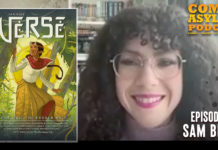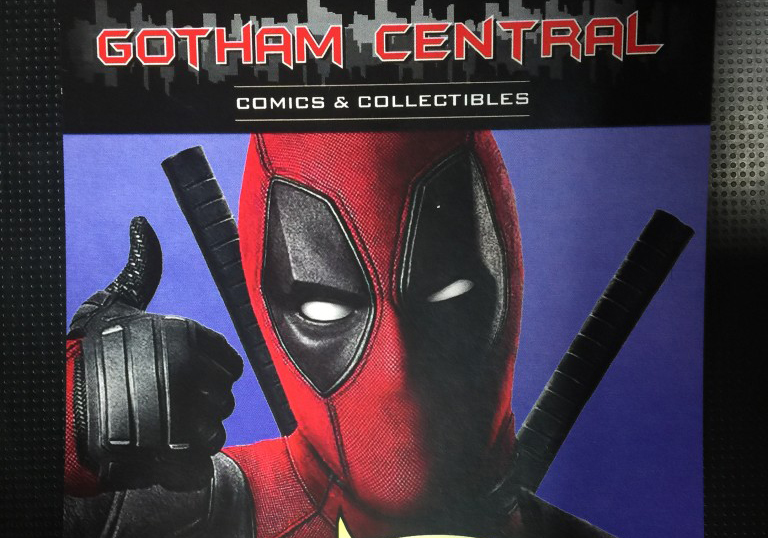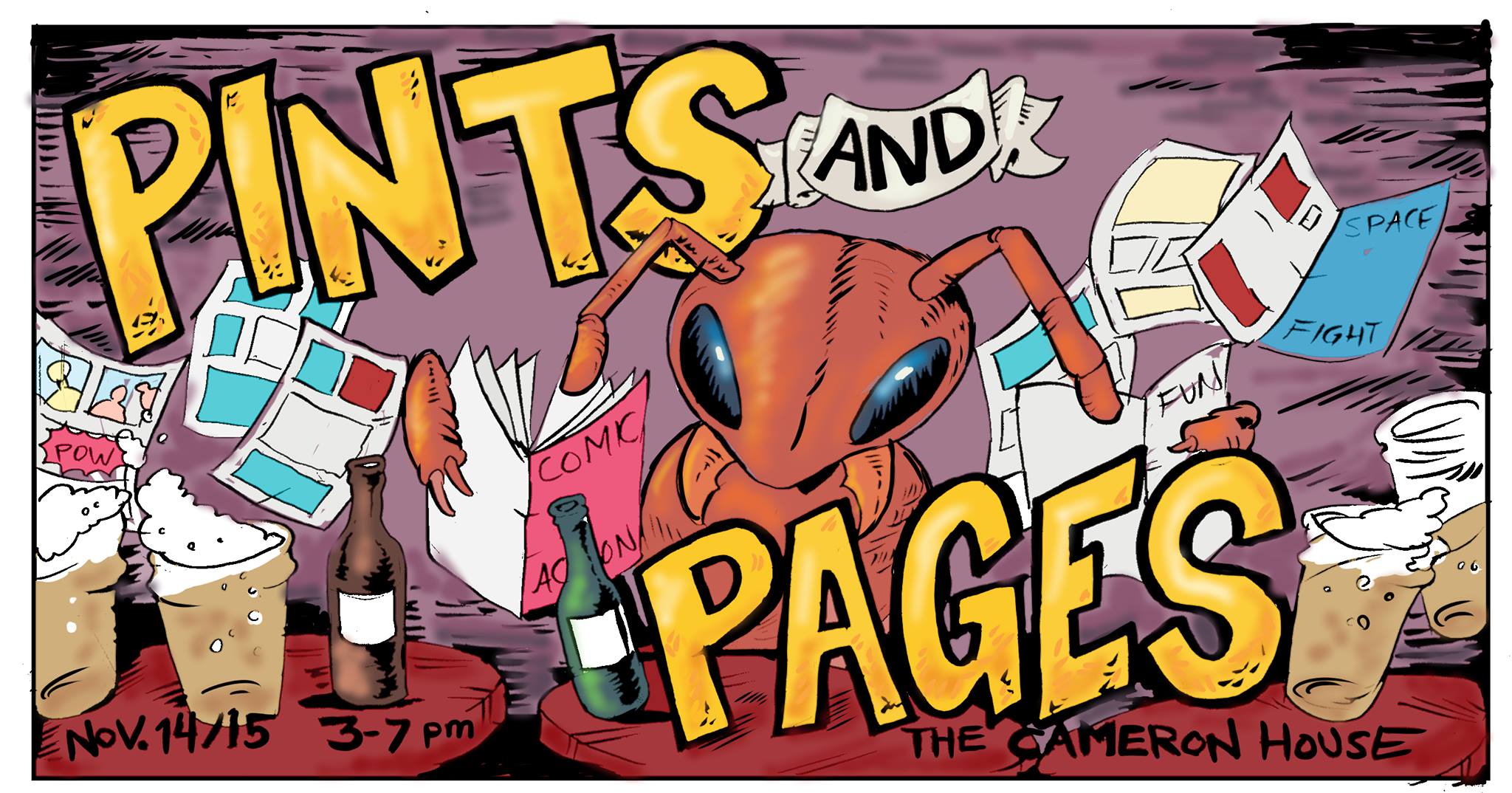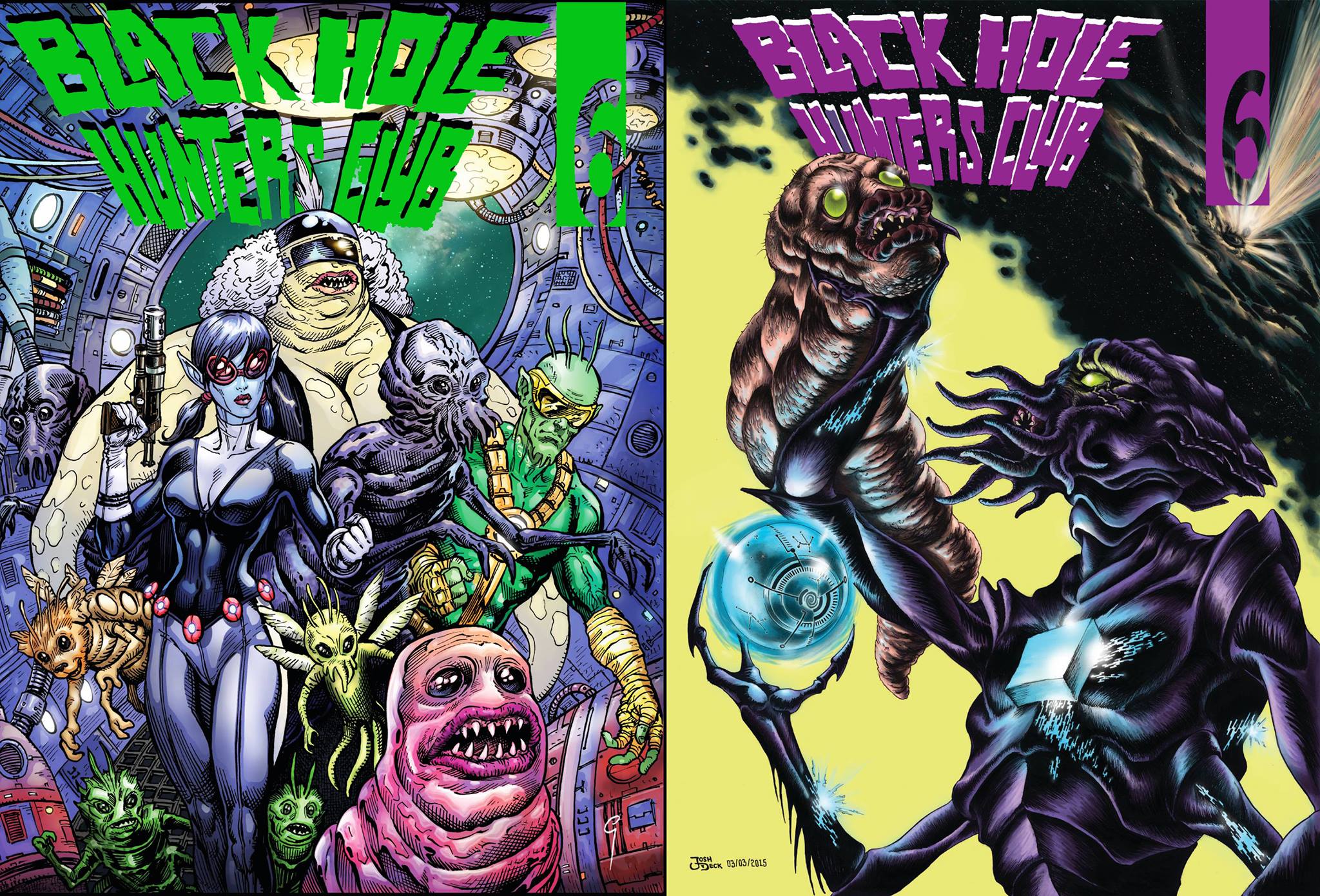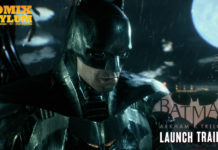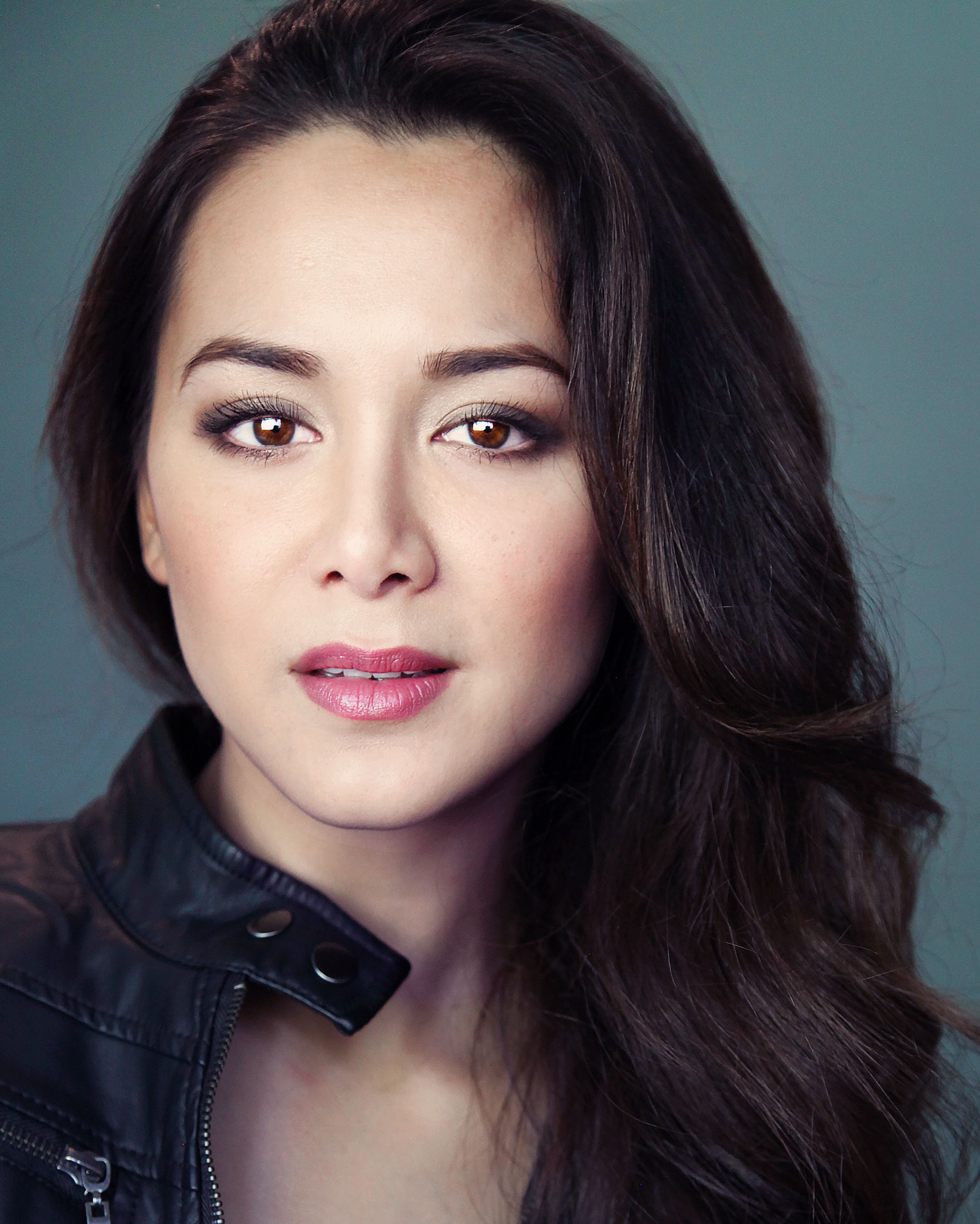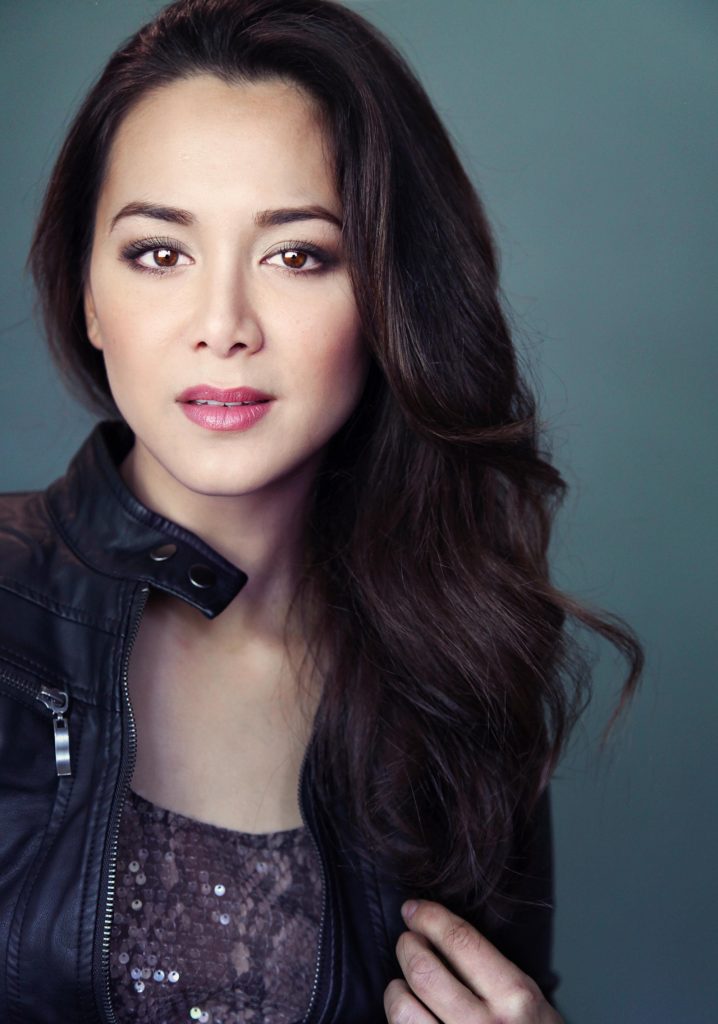 Wonder Woman’s Samantha Jo talks about her upcoming film, stunt work, and competing in the Olympics.
Wonder Woman’s Samantha Jo talks about her upcoming film, stunt work, and competing in the Olympics.
PVH: Congratulations on your role in the upcoming Wonder Woman movie. Can you tell us about your character without giving away any spoilers?
SJ: Thank you, yes. Probably just a little bit. (laughs) It’s always a line you have to tip toe, but my character’s name is Euboea, and I’m an Amazonian warrior. Amazonians are already known in the comic books, so it wouldn’t be too much of a giveaway that we are strong women and we have the skills for fighting, super strength, and we trained extremely hard and should be able to stand our own ground. It’s an empowering part to play, especially as a woman who hasn’t really been able to experience that in film before; it’s really a great opportunity, growing up with a Wonder Woman doll, not a Spider-Man doll or a Batman doll. It’s nice to finally have that character brought to light, and not only to be able to be a part of it but to continue to be a strong person. I don’t have to be, not ashamed of my training or my muscles, but I can feel empowered with it now. And that’s the goal; everybody wanted us to be strong, and have muscles, and it was great, it was nothing like I had ever experienced before and it was fantastic.
PVH: In addition to Wonder Woman, you’re also going to be in the upcoming Justice League film. It must be pretty exciting to appear in both films.
SJ: Oh yeah, yeah. I was jumping for joy when I found out. (laughs)
PVH: And you were also in Man of Steel in a different role. So you have quite a link now with the DC cinematic universe.
SJ: Yeah, I’ve been extremely fortunate. I didn’t think that I would be allowed to play a different role in Wonder Woman and Justice League because I played a Kryptonian in Man of Steel, but they told me they were aware of it and they said, “Whatever. Maybe it will be a fun trivia fact, but it’s not too big a deal.” And I was like, “Wow, that’s amazing.” I think I’m the first one in the DC universe to appear as different characters, I’m not a hundred percent sure but I think so.
PVH: That’s really cool.
SJ: Yeah.
PVH: What was it like working opposite Gal Gadot?
SJ: She’s such a lovely person. I think anyone who’s worked with her will tell you she has such a bright smile, she’s always happy and positive on set, and really a pleasure to work with.
PVH: Was there any difference between the Wonder Woman and Justice League shoots?
SJ: They were vastly different. Mainly because on the Justice League set with Zak Snyder directing, I guess I felt like I knew more people on that set because I had worked on other Zak Snyder films before. So you do see a lot of the same faces and it becomes like a family. It was pretty much a family vibe and it felt like home for me, and there’s always somebody that you know that you can go up and hug. It was just very homey like that, amazing, it always is like that.
And then on the Wonder Woman set, it was amazing in a different way in that there was a female director [Patty Jenkins], a female lead [Gadot], all these female Amazonians – we’re all training, we’re all pushing sleds and doing pull ups and push ups and lifting weights, and it was a very empowering feeling, and I had never experienced that on a set before. I used to stunt double before, and it was mostly one or two or three girls and then a sea of stuntmen. (laughs) So you’re used to that masculine kind of energy when you’re working out, when you’re doing anything, the jokes – it was really interesting to be around so many different women that come from so many different walks of life. There was an Olympic bobsledder, (laughs) there were Cross fit women, there were track and field women, there were dancers, and there were models. There were so many different types of women, it was amazing to hear everybody’s stories and to train and work together and suffer together (laughs). It was really a unique experience and I don’t think I will experience that again on a film set.
PVH: That would be interesting; you mention you have a wide variety of athletics, disciplines and physiques, but all of it empowering and providing a positive message.
SJ: Yeah, oh most definitely. Just because there was such a wide variety of women, we got to see like, oh, this must be important, and that makes us proud, as a human being, when you see so many different types of people represented, it makes you happy. There are tall girls, there are short girls; there are more muscular girls, there are leaner girls, and it really made you feel comfortable in your own skin, and that’s how we did feel. Nobody was self-conscious, everybody was supporting each other; we all struggled in different aspects, and you would always have somebody there to help you. It was great.
PVH: And that makes for a more pleasant experience.
SJ: Yeah, and it really helps with the development of your character, because these women Amazonians, we would have grown up with them and be very close and fight for each other. So, to create that bond off the set while working out only serves the story even more.
PVH: For our Canadian fans, you’re a fellow Canuck –
SJ: Yes I am!
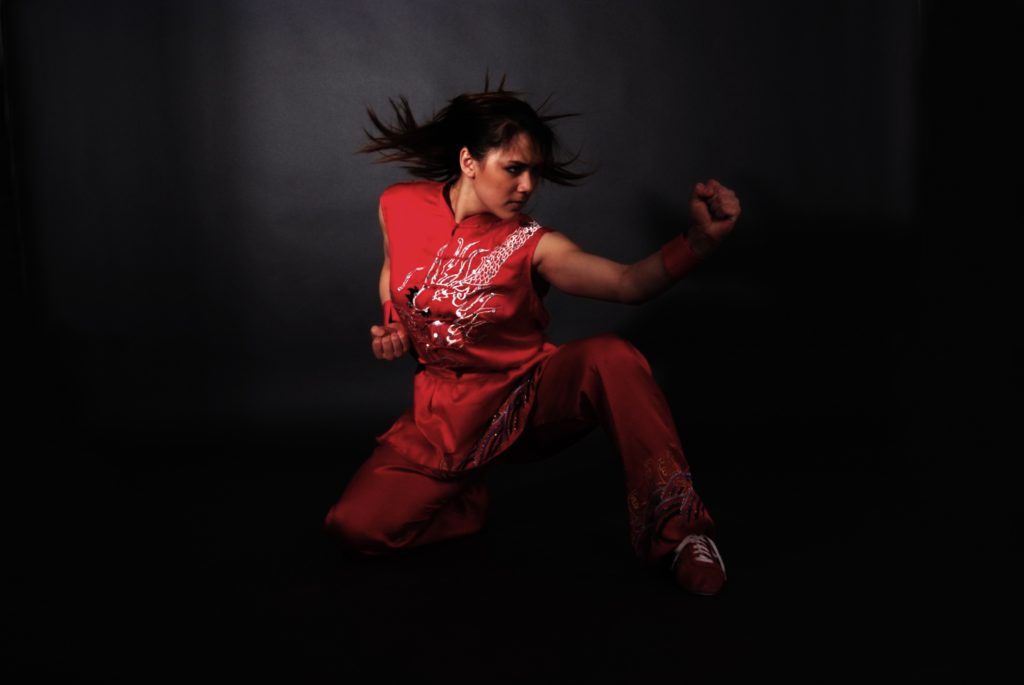 PVH: And you won Gold and Bronze medals while competing for Canada in Wushu. Did your proficiency in Wushu prepare you for your training and scenes as an Amazon warrior?
PVH: And you won Gold and Bronze medals while competing for Canada in Wushu. Did your proficiency in Wushu prepare you for your training and scenes as an Amazon warrior?
SJ: It prepared me very, very well, and I wouldn’t have thought that, because you don’t watch a lot of Hollywood-style films that have Wushu in it, unless you’re watching a Jet Li film. It made the physical aspects of the job a lot easier to understand. When it came to choreography using weapons or anything I might have been able to pull from Wushu I didn’t have to think about the physical aspect anymore, so I could be present in the moment and I could worry about other things, like “Oh, I hope my shoe doesn’t come off,” (laughs) or “I hope this sand gets out of my armor,” (laughs). I could put my attention elsewhere and it’s helped me, not only in the physical manner, but mentally; the training was really difficult, and there were a few breakdowns from a few people at different times and it was just hard. And I think Wushu really prepared me in that my butt had been kicked so badly already that it wasn’t a big deal for me anymore. I was used to the struggle and the strain and the pain, and I knew that eventually it would be over and I would be happy that I did it. So it really prepared me for that; I felt like I had such a huge advantage because I had already been through that and I knew it was going to be good.
PVH: And it also allowed you to focus on performance as opposed to wondering about remembering the choreography. As you said it becomes automatic and you can focus on character and being in the moment in the scene.
SJ: Yeah, exactly. Acting-wise, there will be times where, say, you have to hit a certain mark and do a certain action at that mark. You have to keep it in your head so if you’re trying to act and you are given these notes, sometimes it can be hard to balance both of them. But I definitely have found it getting a lot easier for myself when I am given a note like hitting this mark, or make sure my sword is angled this way, or make sure my elbow is in this position. Whatever the note may be, once I hear it and understand it, I don’t really have to think about it again, which is so much more helpful than I would have ever thought. Because when I first started that wasn’t the case, and you would sit there before the take going, “keep my elbow in, keep my elbow in,” and you forget the acting side of it because you’re so worried about your elbow. (laughs)
PVH: You even went to the Olympics in Beijing.
SJ: Yeah! (laughs)
PVH: What was that experience like?
SJ: Oh gosh, well, Wushu was an exhibition sport in the 2008 Olympics, because it was in Beijing, China, and its China’s national sport and was allowed to be included. So it was a once in a lifetime opportunity; it [Wushu] has not been a part of the Olympics since, and I am so lucky I was the right age and training and competing at the right time to be able to experience that, because when I went, there were only three women from Canada that qualified and I got to be one of them, and we stayed in the Olympic village, we marched out with the athletes, we received our Olympic passes, and everything was the same except our medals couldn’t go against the official count because Wushu was a demonstration sport. But all the important parts for me like staying in the village to be around all those athletes, training and watching them, it was so inspiring because you could see in everyone’s eyes that they had worked so hard to be there and they were appreciative of it. I thought that they would have been more focused, more head in the game, and they were of course when they were competing, but when you see people walking around or in the dining hall, you see a sense of grandness, you just know their life right now is great and they are living in the moment. It will probably be the greatest experience of my life.
PVH: That’s very cool, and it would be equally cool to be in the Athlete’s Village and you’re hanging out with your fellow competitors, you get to see a side of them that, spectators in the stands and the audience watching on television wouldn’t see because the athletes are focused on the competition.
SJ: Oh yeah. I get to see them a little more relaxed, taking a breath, spending time with their teammates, or in the pool or wherever and living life to the fullest. It was really cool.
PVH: So how did you transition from competing in martial arts to doing stunt work in Hollywood features like Scott Pilgrim vs. the World, Sucker Punch and television’s Agents of S.H.I.E.L.D?
SJ: I’ll try to be as clear as I can, but I myself don’t know fully how it happened! (laughs) But I know that I was training and competing in Wushu and my Sifu, Alan Tang, had done some work in the stunt world and he had some contacts, and I trained with other people who would later become stunt people. I think that it was a combination of these great people in my life that had been throwing out my name and recommending me for different things and I didn’t know that they were because I was very young at the time, seventeen.
One day I got a Facebook message from a stunt co-coordinator in Hollywood telling me about this job in Vancouver and if I would be willing to travel there to work. It can sound a bit shady because I didn’t know this person (laughs) and it’s just a Facebook message because they saw my YouTube video, so everything was online and I thought, maybe I should check this person out before flying off to meet a complete stranger. Thankfully I did check, and it was a legitimate person, and from that job everything started snowballing. It wasn’t even like I made a conscious decision that I wanted to be a stuntwoman, because I’d never really pursued stunts. I had taken acting classes and taken martial arts, and I didn’t really know I was preparing myself for that until the opportunity came and I was like, “Wow, that is perfect for me now. This is what I want to do.”
And as I got more opportunities, I got more acting classes under my belt and really started to pursue that passion. It’s funny, I don’t really know how it happened, but like when you are ready for something, the doors open and if you are ready and you step through – I think I was lucky with the combination of great people and great timing, and I worked hard, so I was ready when the opportunities came.
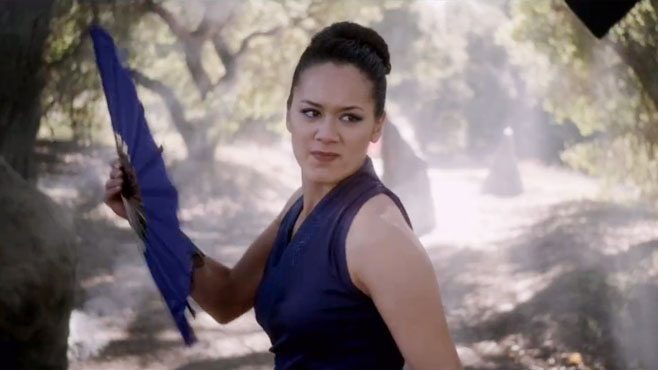
PVH: Your stunt work has led to acting roles. How would you compare your experience working in television with Agent X compared to Mortal Kombat: Legacy, which is a digital web series?
SJ: Agent X was for TNT and Mortal Kombat: Legacy was a web series with Warner Brothers Entertainment, and I was younger for Mortal Kombat: Legacy. It was one of my first acting jobs where there was substantial dialogue. They were very different experiences, I had a lot of fun on Mortal Kombat: Legacy because I was so new to everything and everything was exciting. The director, Kevin Tancharoen, had been in the dance world before, and so he knew choreography and body movement really well, and he was so helpful when it came to the fight sequences and he had an eye for it. I would look at playback and go, “Wow, it looks so much cooler than I feel doing it,” but he knew how to shoot everything. But both of them were amazing experiences, I couldn’t really compare the two, but Agent X was amazing, they had a great team, we had lots of choreography and I was around a lot of friends when I was shooting that, that I had worked with in the stunt world before. So, I’ve really been lucky, I can’t say I’ve had a negative experience on anything, and I’d be more than happy to keep it that way.
Connect with Samantha Jo on social media:
https://twitter.com/SamWJo
https://www.facebook.com/OfficialSamanthaJo/
Wonder Woman hits theaters June 2.





